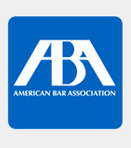You’re hit by another vehicle at a red light, but the police report suggests you were partially at fault. Does this mean you can’t recover damages? Not necessarily. Florida’s comparative negligence laws may still allow you to receive compensation—even if you share some responsibility for the accident.
Understanding how comparative negligence works in Florida is important if you’ve been injured due to someone else’s actions. This legal principle can significantly impact your ability to recover damages and the amount you ultimately receive. At The Bruner Law Firm, our personal injury attorneys help injured clients work through these complex fault determinations to protect their rights and pursue their recovery.
What is Comparative Negligence?
Comparative negligence is a legal doctrine that allows injured parties to recover damages even when they bear some responsibility for their injuries. Rather than using an all-or-nothing approach, comparative negligence recognizes that accidents often involve multiple parties, each contributing to the incident in different ways.
Under this system, the court or jury assigns a percentage of fault to each party involved in the accident. Your compensation is then reduced by your assigned percentage of fault. For example, if you’re awarded $100,000 in damages but found to be 20% at fault, you would receive $80,000.
This approach differs significantly from the older doctrine of contributory negligence, which barred recovery entirely if an injured party bore any responsibility for their injuries. Comparative negligence is far more equitable, recognizing that real-world accidents rarely involve one party being completely blameless.
Florida’s Modified Comparative Fault Rule
Florida operates under a “modified comparative fault” system, codified in Florida Statute § 768.81. This statute establishes a critical threshold: you can recover damages only if you are less than 51% at fault for the accident. If you are determined to be 51% or more at fault, you cannot recover any damages whatsoever.
This is sometimes called the “51% bar rule,” and it’s a crucial distinction from “pure comparative negligence” states, where injured parties can recover even if they’re 99% at fault (though their recovery would be reduced accordingly).
Under Florida’s modified system, your damages are reduced by your percentage of fault. If you’re 30% at fault for a $100,000 claim, you recover $70,000. If you’re 50% at fault, you recover $50,000. But if you’re 51% at fault, you recover nothing.
This rule applies to all personal injury cases in Florida, from motor vehicle accidents to premises liability claims to workplace injuries. Understanding this threshold is essential because it determines whether you have a viable claim at all.
How Comparative Negligence Is Determined
Determining fault percentages isn’t a simple mathematical calculation—it’s a complex process involving evidence, expert analysis, and legal arguments. Here’s how it typically works:
Evidence Collection and Presentation
Both sides present evidence to establish how the accident occurred and who bears responsibility. This includes police reports, witness statements, photographs of the accident scene, medical records, and physical evidence. In motor vehicle accidents, factors like traffic violations, vehicle damage patterns, and skid marks all contribute to the fault analysis. Our personal injury lawyers gather and analyze this evidence to build strong cases for our clients.
Expert Testimony
In many cases, expert witnesses play a crucial role. Accident reconstruction experts analyze the physics of the collision, vehicle damage, and scene evidence to determine how the accident likely occurred. Medical experts may testify about the nature and extent of injuries. These experts help establish causation and negligence. When you work with The Bruner Law Firm, we retain the best experts to support your case.
Jury Instructions and Verdict Forms
If your case goes to trial, the judge provides specific jury instructions about comparative negligence. The jury then completes a verdict form that asks them to assign a percentage of fault to each party. This percentage reflects their determination of how much each party’s negligence contributed to the accident.
Documentation Importance
The strength of your case depends heavily on documentation. Photographs taken immediately after the accident, medical records showing your injuries, witness contact information, and your own detailed account of events all matter. The more thorough your documentation, the stronger your position in establishing fault percentages favorable to your claim.
Common Scenarios Where Comparative Negligence Applies
Comparative negligence principles apply across virtually all personal injury cases in Florida. Understanding how they work in common scenarios helps illustrate the concept:
Motor Vehicle Accidents
In a rear-end collision, the rear driver is typically found primarily at fault. However, if the front driver suddenly reversed without checking their mirrors, they might bear some percentage of fault. If you were texting while driving and hit a vehicle that ran a red light, both parties share fault. If you’ve been injured in a car accident, our car accident lawyers can evaluate how comparative negligence may affect your claim and help you pursue maximum recovery.
Slip and Fall Incidents
You slip on a wet floor in a grocery store. The store may be liable for failing to place warning signs or clean the hazard. However, if you were running through the store or wearing inappropriate footwear, you might bear some comparative fault. The jury would assign percentages based on each party’s negligence. Understanding liability in slip and fall accidents is critical to protecting your rights. Our slip and fall lawyers have extensive experience handling these complex cases.
Premises Liability Cases
A guest is injured at a property owner’s home due to a broken step. The property owner may be liable for failing to maintain the property. But if the guest ignored warning signs or was trespassing in an off-limits area, comparative fault applies. Premises liability claims frequently involve comparative negligence determinations that can significantly impact your recovery. What is premises liability, and when can you sue? Our attorneys can answer these critical questions.
Workplace Injuries
An employee is injured when a coworker fails to follow safety protocols. While the employer may be liable, if the injured employee also violated safety procedures, comparative negligence could reduce their recovery. Workplace injury claims often involve complex fault analysis that requires experienced legal representation. Our workplace injury lawyers understand the unique challenges of these cases.
Vacation and Recreational Accidents
You’re injured during a resort activity due to inadequate safety measures. The resort bears primary responsibility, but if you ignored safety instructions or engaged in reckless behavior, comparative fault may apply. Vacation and recreational accidents frequently raise comparative negligence issues that affect your compensation. Whether it’s a boating accident or other vacation injury, we have the experience to help.
Impact On Your Damage Recovery
Comparative negligence directly affects the compensation you receive. Understanding this impact is essential for realistic case evaluation.
How Fault Percentage Reduces Compensation
Your total damages are calculated first, then reduced by your percentage of fault. If you suffered $150,000 in damages (medical expenses, lost wages, pain and suffering) and are found 25% at fault, you would receive $112,500. With 40% fault, your recovery drops to $90,000. At 50%, you’d get $75,000, and once your fault reaches 51% or more, you recover nothing.
Example Calculations
Consider a motor vehicle accident where you’re injured:
Total damages awarded: $200,000
Your assigned fault: 15%
Your recovery: $170,000 ($200,000 minus 15%)
In another scenario:
Total damages awarded: $150,000
Your assigned fault: 55%
Your recovery: $0 (you exceed the 51% threshold)
Threshold for Recovery Eligibility
The 51% threshold is absolute. Even if you’re 51% at fault and the defendant is 49% at fault, you cannot recover. This makes the fault determination process critically important. The difference between 50% and 51% can mean the difference between recovering substantial compensation and recovering nothing. This is why having skilled personal injury representation is essential.
Implications for Different Damage Categories
Comparative negligence reduces all categories of damages proportionally: medical expenses, lost wages, pain and suffering, and any other awarded damages. There’s no distinction—your percentage of fault applies across the board. Understanding how damages are calculated helps you evaluate settlement offers and determine whether litigation is necessary.
Defending Against Comparative Negligence Claims
When you file a personal injury claim, the defendant will likely argue that you bear some responsibility for your injuries. Effectively defending against these comparative negligence claims is essential to maximizing your recovery.
Strategies to Minimize Fault Assignment
The strongest defense is establishing that the defendant’s negligence was the sole or primary cause of your injuries. This requires presenting clear evidence of the defendant’s duty, breach of that duty, causation, and damages. Simultaneously, you must demonstrate that you exercised reasonable care and didn’t contribute to the accident. Our attorneys know how to challenge unfair fault assignments and present compelling arguments on your behalf.
Documentation and Evidence Collection
Immediately after an accident, document everything. Take photographs of the scene, vehicle damage, weather conditions, and any hazards. Obtain contact information from witnesses and ask them to describe what they saw. Preserve your own medical records and keep detailed notes about your injuries and recovery. This documentation becomes crucial evidence in establishing fault percentages. Learn more about how to document your personal injury for a successful claim to strengthen your case.
Witness Testimony Importance
Credible witnesses who can testify about how the accident occurred are invaluable. Their independent observations carry significant weight with juries. If witnesses saw the defendant violating traffic laws, ignoring safety procedures, or acting recklessly, their testimony directly supports your position that the defendant bears primary responsibility. Our trial attorneys excel at presenting witness testimony persuasively.
Burden of Proof Considerations
In civil cases, the burden of proof is “preponderance of the evidence”—meaning your version of events must be more likely true than not. The defendant bears the burden of proving their comparative negligence. By presenting strong evidence of the defendant’s negligence and your reasonable conduct, you shift the burden effectively. Understanding your rights after an accident helps you protect your position from the start.
Frequently Asked Questions
Can I recover damages if I’m partially at fault?
Yes, under Florida’s modified comparative fault rule, you can recover damages as long as you’re less than 51% at fault. Your recovery is reduced by your percentage of fault. If you’re 30% at fault, you recover 70% of your damages. If you’re 50% at fault, you recover 50% of your damages. Our personal injury attorneys can evaluate your specific situation and explain how this rule applies to your case.
What percentage of fault prevents recovery in Florida?
If you are determined to be 51% or more at fault, you cannot recover any damages. This is Florida’s critical threshold. Even being 51% at fault—just one percentage point over the threshold—bars all recovery. This makes the fault determination process extremely important. That’s why you need experienced representation from the moment you’re injured.
How do insurance companies use comparative negligence?
Insurance adjusters assign fault percentages to determine settlement amounts. They review police reports, photographs, witness statements, and other evidence to estimate fault. If they determine you’re 40% at fault, they’ll offer 60% of the claim value. Understanding their fault analysis helps you evaluate settlement offers and determine whether litigation is necessary. Our attorneys know how insurance companies operate and can help you negotiate effectively.
Can comparative negligence be appealed?
Yes, fault determinations can be challenged through the appeals process. If you believe the jury’s fault assignment was unreasonable or unsupported by evidence, your attorney can appeal. However, appellate courts give significant deference to jury verdicts, so successful appeals on this issue are relatively uncommon. Our legal team has experience with appeals and can advise you on your options.
Why You Need An Experienced Personal Injury Attorney
Comparative negligence disputes are complex and can greatly affect your recovery. Having experienced legal representation is essential.
Insurance companies and defendants have strong incentives to assign you as much fault as possible. They employ experienced adjusters and attorneys trained in fault analysis. Without equally skilled representation, you’re at a significant disadvantage. An experienced personal injury attorney levels the playing field. At The Bruner Law Firm, we have the experience and resources to stand up to insurance companies and defendants.
How Attorneys Challenge Fault Determinations
Skilled attorneys know how to challenge unfair fault assignments. They gather comprehensive evidence, retain expert witnesses, and present compelling arguments about how the accident occurred. Through effective cross-examination, they expose weaknesses in the defendant’s witnesses and fault analysis. Experienced in jury psychology, they know how to present your case persuasively. Our trial attorneys have successfully defended clients against unfair comparative negligence claims.
Our Approach to Comparative Negligence Cases
At The Bruner Law Firm, our attorneys have helped injured clients work through complex fault determinations. Our legal team understands Florida’s comparative negligence law thoroughly and knows how to build strong cases that minimize your assigned fault. We gather evidence carefully, retain necessary experts, and present your case persuasively—whether in settlement negotiations or at trial.
Our team focuses on representing injured plaintiffs, which means we understand your perspective and priorities. We work to pursue your recovery while keeping you informed throughout the process. Our contingency fee arrangement means you pay nothing unless we win your case. We typically charge 33-40% of your settlement or award, with no upfront costs. Contact us today for a free case evaluation.
Protecting Your Rights and Pursuing Your Recovery
From the moment you contact us, we work to protect your rights. We investigate the accident thoroughly, preserve evidence, and begin building your case immediately. We communicate with insurance companies on your behalf, ensuring they understand the strength of your position. If settlement negotiations don’t yield fair results, we’re prepared to take your case to trial. See our case results and client testimonials.
Related Posts
- What Does a Car Accident Lawyer Do? – Learn how legal representation protects your rights in motor vehicle accident claims
- What Is Premises Liability and When Can You Sue? – Understanding liability principles in property-related injuries
- Understanding Liability in Slip and Fall Accidents in Florida – A comprehensive guide to comparative negligence in slip and fall cases
- How to Document Your Personal Injury for a Successful Claim – Essential documentation strategies for building strong fault arguments
- Understanding the Difference Between Medical Malpractice and Personal Injury – Distinguishing between different personal injury claim types







